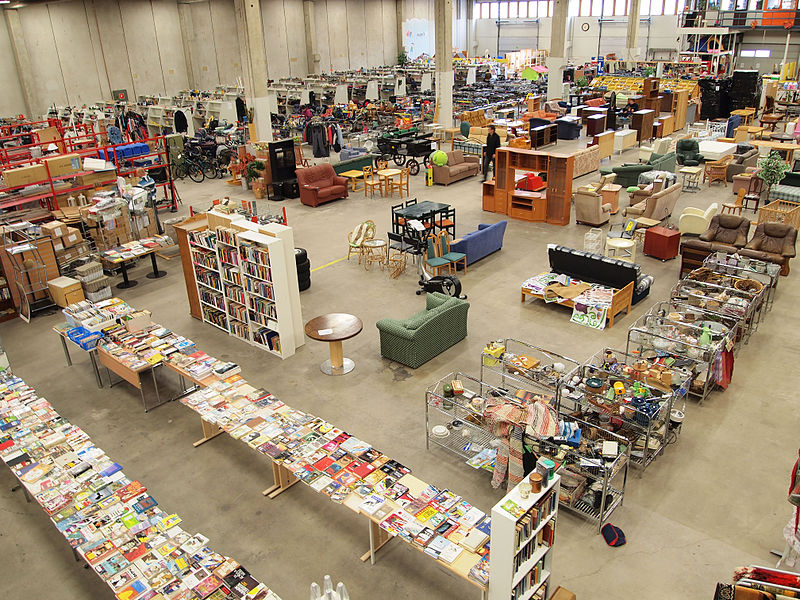About
What is thrifting?
Thrifting is the practice of shopping for secondhand, gently used goods, such as clothes. The goal is to find something of great quality or value that won't break your budget.
Why should I thrift?
Thrifting is a form of recycling. By re-using or re-purposing perfectly functional goods, we keep our landfills from becoming a little less full.
What do you mean by re-purposing?
To re-purpose an object means to give it a new life. For example, you could find a set of pretty living room curtains and turn them into a dress. There are many YouTube channels devoted to thrifting and it's a great placeto get inspiration. Coolirpa is a great example. In fact, she made a video about transforming a curtain into a dress.
Where can I thrift?
You can go thrifting almost anywhere. Some places include non-profit stores, flea markets, and consignment shops. I recommend non-profit stores because the sales are used to fund community services.
A non-profit store receives donated goods from individuals or institutions. The store does not pay the donator for the items. Instead, the store will issue a tax receipt for the items and the donator can receive a tax deduction. Some donators choose to not obtain a tax receipt. The non-profit store will sell the items and use the money to fund their employment programs and other community services. Goodwill, The Salvation Army, and Housing Works are non-profit stores. See the section Stores on this website for more information.

A flea market takes place in a rented venue. Vendors rent space at the market. Here, the vendor sells goods directly to the consumer and the vendor keeps the profit. Price negotiation is common. A flea market can be indoors or outdoors, for example in a school gymnasium or a parking lot.
A consignment shop sells goods on behalf of a third-party. An individual will bring an item to the shop, which will decide whether or not to sell it. If the shop decides to display it for sale in the store, the item will remain at the retailer for an agreed upon length of time. If the item is sold, the shop and the item's original owner will split the profit. Usually, the original owner will receive a smaller percentage of the sale. If the item does not sell, then it is returned to the original owner. Consignment shops tend to be on the pricier end of thrifting. Examples of consignment shops include Buffalo Exchange and 2nd Time Around.
What is the right way to thrift?
There is no right or wrong way to thrift. Where you want to shop and what you do with your thrifted goods is all up to you!
What can I expect when I visit a thrift store?
At a non-profit store, you will see the store packed with merchandise. In the clothing department, it can be particularly overwhelming. Stores will have garments organized first by gender (women's and men's sections), then by type (pants, shirts, coats, etc.), and lastly by color. To make things easier, some shops have uniform pricing for specific merchandise. Since thrift stores receive their inventory through local donations, stock will vary by location.
At a flea market, organization depends on the vendor. In most cases, clothes will just be piled on tables or in bins and the shopper will need a lot time to sort through everything.
At a consignment store, inventory is more selective so the store is neither overstocked nor understocked.
Do thrift stores sell clothes that are in good condition?
Yes! Thrift stores only sell items that are in saleable condition. This means the item must be like-new or only have minor defects. You may find clothes with the original prices tags attached. You may also find clothes with small rips or stains, which can be easily fixed or concealed.
If an item has clear, unfixable defects, the store will not sell it. Also, stores will always receive more clothes than they can sell. Clothes that can't be sold (because they are beyond repair or have been on the sales floor for a long time) will most likely be sent to facilities that will re-sell them in bulk or turn them into scrap fabric.
If you do find an item that is in disrepair, the damage most likely happened after the item reached the sales floor. Accidents happen.
Do thrift stores accept returns?
It depends. Some stores will give you store credit for a returned item. At other stores, all sales are final. Each store will have its return policy posted at the register and printed on the sales receipt.
Remember, many thrift stores are operated by non-profits. Non-profits sell donated goods in order to raise money for their community programs. It is reasonable for many thrift stores to offer neither cash refunds nor any refund.

